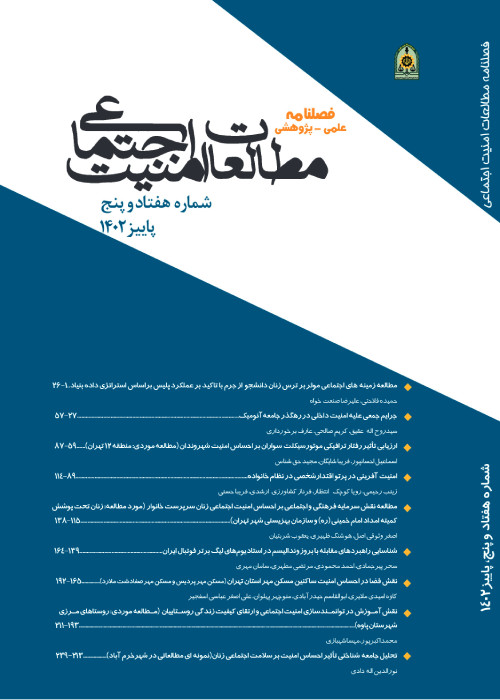Quantitative content analysis of quarrel cases(case study: Ardabil province)
Quarrel is defined as physical fight between more than two people, which takes place in urban-rural communities in various forms and types: individual and collective (tribal-kinship). According to Smelser's theory of institutional development, the main root of quarrel is in developmental disorder, mainly due to scarcity of resources, relative deprivation, traditional structure and conflict with emerging values and norms, rapid value displacement, social disorganization and finally anomie). The main goal of this research is to analyze the quantitative content of quarrel files (case study: Ardabil province). The statistical population was 80 dismissed judicial files of quarrel (assault and battery) during 2011-2015 (due to non-confidentiality of the results of the file).
The cluster method was used for choosing the location of the study and the method of choosing the location of the file was being of deliberate type, and the principles of randomly choosing the files’ registered number.
The results indicate that 85% of the quarrel parties are men and 15% are women; 42% of the parties to the quarrel are individuals belonging to the lower (socio-economic) class, 32% from the middle class and 26% from the higher class; and 62% of the quarrels occur in the traditional environment (rural, nomadic or marginal areas). Individuals who are between 21 and 30 have played the most role in the quarrels. The more educated the people, the lower will be the quarrel rate. Among those involved in quarrels 42% were farmers, 26% ranchers, 20% self-employed, and 12% worked with state organizations. Ninety percent of people involved in quarrels were those with previous records of quarrel and fight. Twenty-nine percent of quarrels occurred in spring, 45% in summer, 16% in autumn and just 10% in winter. The rate of individual quarrel is 41% and that of collective quarrel is 59%. Twenty-two percent of the parties to the quarrel did not know each other, 15% were acquaintances, 10% were close friends, and 46% were family members and relatives. Family issues with 30 %, supporting clan and relatives with 20 %, personal disagreements and revenge with 14% were the main motivations for quarrel.
Quarrel , fight , clan , kin , relative deprivation , social class , scarcity of resources
- حق عضویت دریافتی صرف حمایت از نشریات عضو و نگهداری، تکمیل و توسعه مگیران میشود.
- پرداخت حق اشتراک و دانلود مقالات اجازه بازنشر آن در سایر رسانههای چاپی و دیجیتال را به کاربر نمیدهد.





